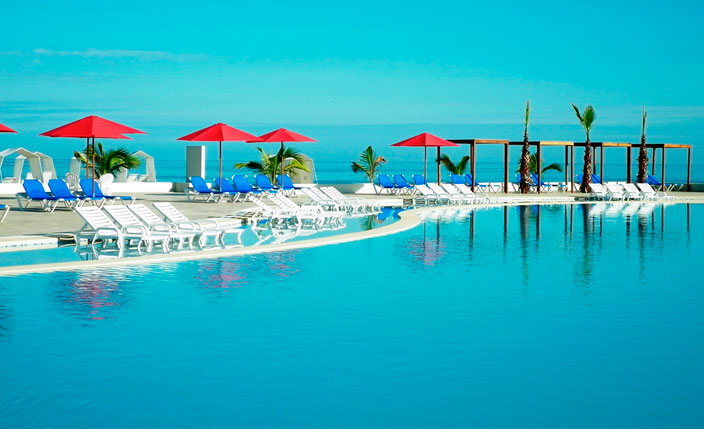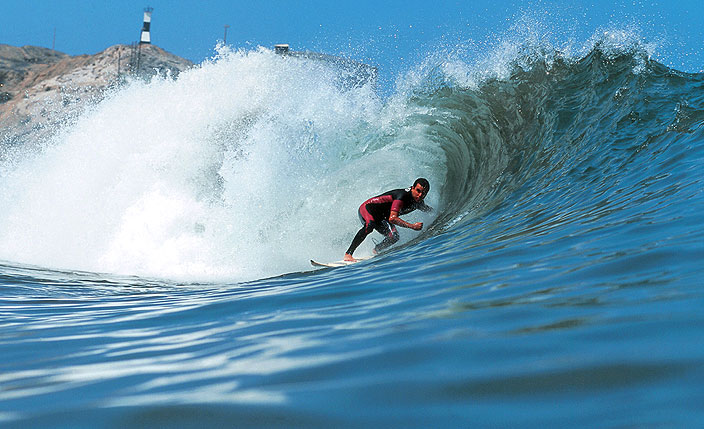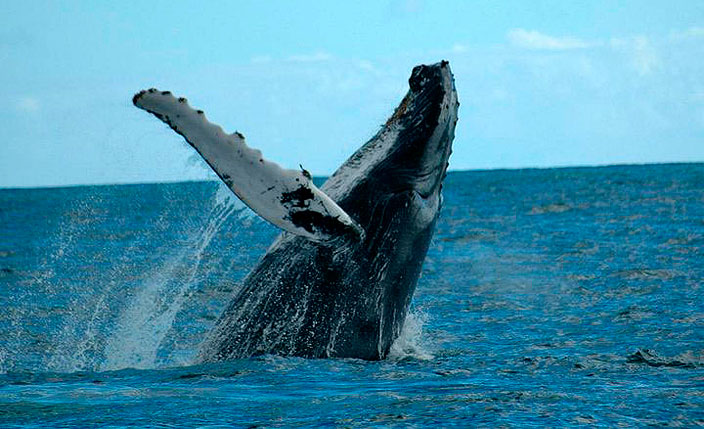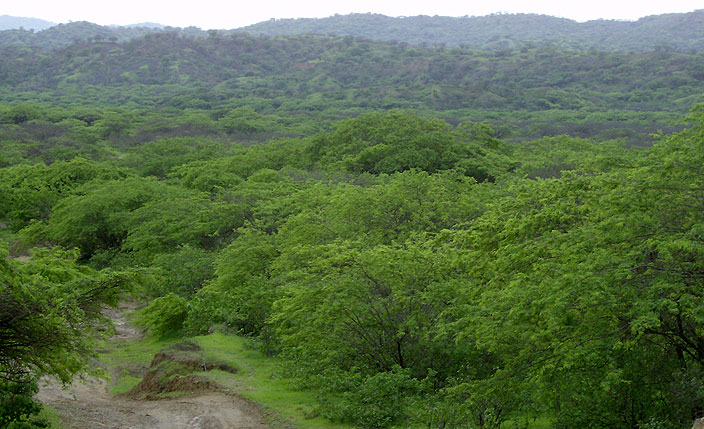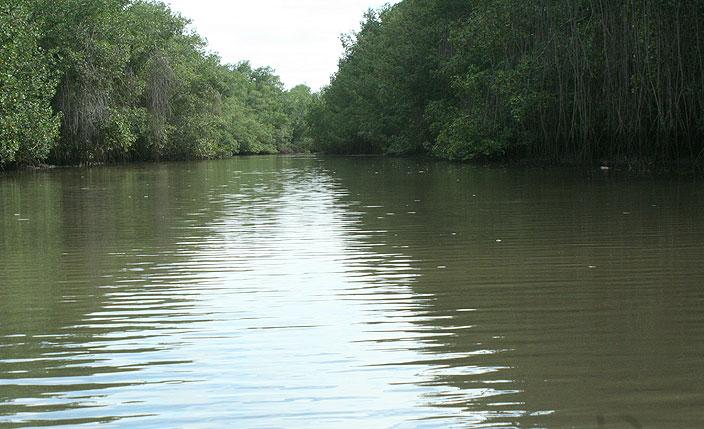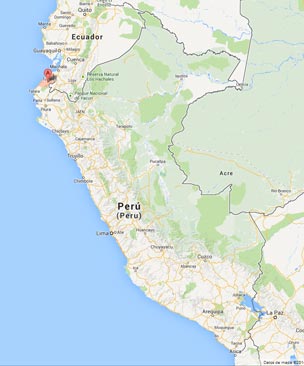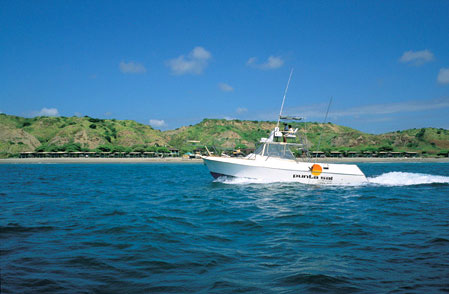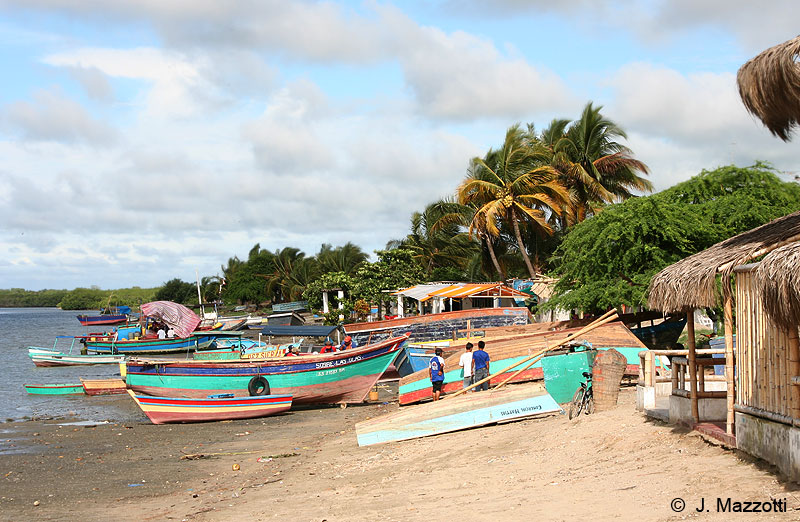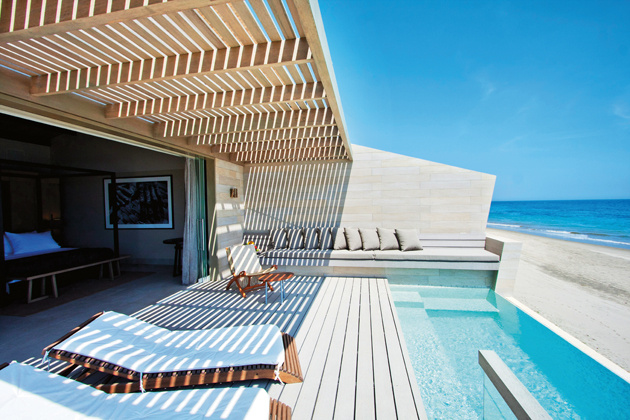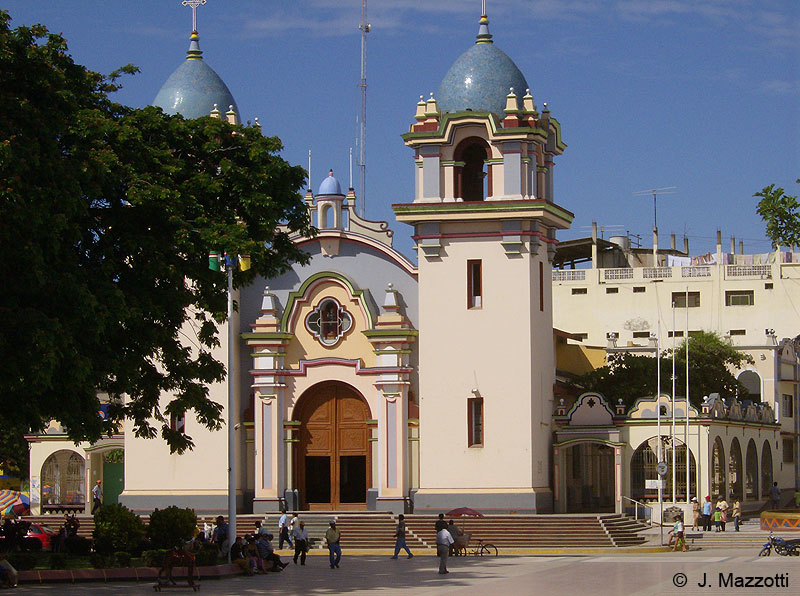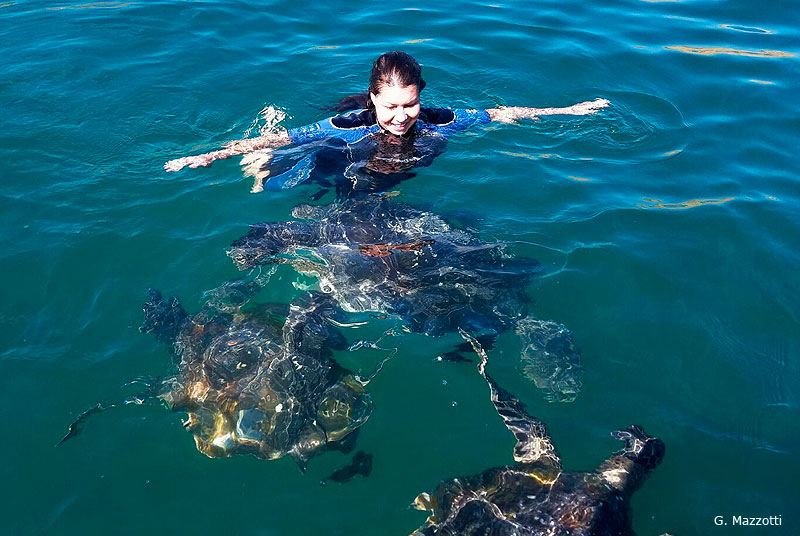Travel to Tumbes | Hotels and Tours
Northern Beaches | Punta Sal, Mancora
Top things to do in Tumbes
Tumbes is for lovers of the sun, the sand and the ocean, handicraft collectors, nature enthusiasts, bird watchers those interested in the study of medicinal plants, shamanism and adventure sports.
 |
 |
 |
Tumbes Travel Guide - Planning to travel to Tumbes
Tumbes has a beautiful coastline that consists of a variety of ecosystems, such as estuaries and mangrove swamps, the Pacific tropical rainforest (Tumbes National Reserve) and the dry, equatorial forest (Amotape Hills National Park).
Tumbes is located on the coast of Pacific Ocean, in the northwest of Peru, it shares a border with Ecuador and consists of large plains, gentle hills, mountainous escarpments and other ecosystems.
Tumbes has excellent beachfront hotels, seafood, restaurants, important natural protected areas and much more .....
Tumbes is the perfect setting for aquatic and nautical sports or simply relaxing. The white sands of Punta Sal, the serene tranquility of Caleta Grau and La Cruz, Zorritos Beach, the American crocodile breeding center in Puerto Pizarro and the famous “cebiche de conchas negras” (a seafood dish with clams) are all part of the identity of a people who live close to the ocean.
Our guide to Tumbes and Northern Beaches gives you expert recommendations on the best attractions, restaurants, hotels, and more.
Sights & Attractions in Tumbes
Northern Beaches - Tumbes and Piura
Punta Sal, Zorritos y Puerto Pizarro are the most required beaches by tourists in Tumbes. Beaches of white sand and warm (26°C. average), with almost guaranteed sun all year round, each offering different alternatives, one for game fishing, spear fishing, whale watching, other ideal for relax and rest. Beachfront hotels and bungalows for rent on these beaches and how to reach them. Since these beaches is easy access to any areas of protected natural areas. Other beaches of Tumbes are Cancas, Punta Mero, Bocapán, Playa Hermosa and Jelí.
Cabo Blanco, Ñuro, Punta Veleros, Los Órganos, Vichayito, Pocitas and Máncora, are just some of the beaches on the coast of Piura, located north of Talara (120 Km from Piura), with guaranteed sunshine almost all year, and each offer different options, some for big-game fishing, whale watching, other ideal for surfing and katesurfing, for relaxation and rest. Beachfront hotels and bungalows for rent on these beaches and how to reach them. Since these beaches is easy access to Cerros de Amotape National Park.
Tumbes City
The city of Tumbes is located on the banks of the Tumbes river, the only river in the Peruvian coast navigable by small boats, is surrounded by a vast tropical vegetation and agricultural areas. Its buildings are republican and modern who have a modest economic development. Near to the main square there are houses of nineteenth century some wood and cane, pedestrian streets and modern monuments around which local people used to meet and local craft galleries. Around the perimeter of the main square to enjoy fine cuisine of Tumbes, the bandshell, the shopping area and the Iglesia Matriz San Nicolás de Tolentino (XVII Century). The Tumbes river boardwalk offers nice views of the area. In Tumbes can not fail to enjoy its famous seafood, such as black scallops, cebiche, chili prawns and majarisco. Information about Cabeza de Vaca archaeological site, Caleta La Cruz and Hervideros.
Protected Natural Areas of Tumbes
Approximately 30% of the territory of the department of Tumbes was declared as protected natural areas for their biological richness and large numbers of endemic species. Its ecosystems include tropical rainforests, dry forests equatorial, mangrove areas and estuaries. Tumbes National Reserve (75,102 hectares), the Mangroves of Tumbes National Sanctuary (2,972 hectares) and Cerros de Amotape National Park (91,300 hectares) are protected areas, which form part of the Northwest Biosphere Reserve by UNESCO recognized in 1977.
North Coast Cuisine
The warm climate enjoyed by the north coast of Peru offers our discerning visitors a variety of seafood and fish that delight the palate. There is nothing better than enjoying the range of flavors of ceviches and sudados with an ice-cold beer or a chicha de jora. meat fans can also enjoy our delicious locally-raised goat. These, as well as a huge variety of sweet and savory dishes alike, make the north coast a destination worth visiting.
The northern regions have a warm climate and its sea holds a generous bounty of fish that are perfect for seafood recipes. Highlights of its cuisine include "cebiches" and "sudados", which combine fish with tangy, spicy and aromatic herbs, creating fresh and intense flavors.
The gastronomy of Tumbes is famous for dishes based on sea bass, grouper, sole, swordfish, as well as mollusks and shellfish from the ocean and the mangroves such as black scallops, crabs, oysters, lobsters, and prawns, you can not fail to enjoy its famous seafood, such as conchas negras (black scallops), cebiche, chili prawns or majarisco.
Cebiches are made from fish, black shellfish or seafood, marinated in lemon juice, hot peppers and salt, and complemented with onion, yam and steamed corn. Chinguirito is a special version of ceviche which uses the dried salted meat of the guitar fish. For the main course, sudado or steamed fish are recommended.
Fried yucca, parmesan shellfish and chifles (slices of fried plantain) are starters that can be shared. All the food in the north is accompanied with ice-cold beer or chicha de jora.
Goat raising is common in the area. The "seco de cabrito" (kid roast) is one of the traditional dishes. Another typical dish is the seco de chabelo, which is made with grilled meat and served with shredded roast plantain. Duck seasoned with black beer on rice is also a classic.
Theologian's soup, a broth made with guan; and the shámbar, another soup with beans, pork and beef, are symbolic of northern cuisine.
Each region also has their own desserts. Popular puddings include quince jellies and the King Kong, a biscuit sandwich filled with pineapple jam and blancmange.
Aside from restaurants, visitors can also enjoy the flavors and quality of the chicherías, where food is cooked in mud pots over a wood fire, or in “huariques”, which are known for their unique homemade flavor.
How to travel to Tumbes
Tumbes City and Northern Beaches are easily accessible by air; commercial flights leave daily from Lima, alternatively flights from Lima to Talara and flights Lima to Piura, or bus transportation to Tumbes city or Máncora from Lima and the main cities of north of Peru. By road through Pan-American Highway from northern cities of Peru or from Guayaquil and Ecuadorian cities.
